Understanding Web3 Development: A Comprehensive Guide for Beginners
Welcome to the sevcik.dev, where the world of Web3 awaits! If you've ever wondered about the evolution of the internet, or if you're just curious about where the future of technology is heading, then you're in the right place.
Web3, the term coined to represent the next generation of the internet, is rapidly transforming our digital landscape. But it's not just another tech buzzword. Web3, with its decentralized architecture and emphasis on user empowerment, is poised to redefine how we interact with the online world. This evolution brings a new area of expertise into focus - Web3 development.
So, what is Web3 development, and why should you care?
At its core, Web3 development is the process of creating applications for this new, decentralized internet - a world where users regain control of their data, and transactions take place peer-to-peer, without the need for intermediaries. It's a radical departure from our current Web 2.0 world, and it comes with its own unique set of challenges and opportunities.
In this comprehensive guide, we will embark on a journey to understand what Web3 development truly means. We'll start by taking a step back to examine the transition from Web 2.0 to Web3, highlighting the key differences and innovations that make Web3 a game-changer. From there, we'll delve into the building blocks of Web3 development - from blockchain and smart contracts to decentralized applications (dApps) and cryptocurrencies.
But that's not all. We'll also be discussing the tools, skills, and platforms you need to be familiar with as a Web3 developer. And to make things more exciting, we'll explore the profound impact of Web3 on emerging sectors like decentralized finance (DeFi) and non-fungible tokens (NFTs).
Whether you're a seasoned developer seeking to upgrade your skills or a complete beginner with a thirst for knowledge, this guide is your compass in the vast landscape of Web3 development. So, are you ready to take a glimpse into the future of the internet? Let's dive in!
Section 1: Web 2.0 vs Web3
The evolution of the internet is a tale as old as time itself - in digital years, that is. It's a story filled with innovation, disruption, and a constant strive for better connectivity. To truly grasp the concept of Web3 development, it's essential to understand how we got here in the first place. This journey takes us back to the dawn of Web 2.0 and then forward to the emerging era of Web3.
1.1 Introduction to Web 2.0
Web 2.0, also known as the "social web", marked a significant shift from the static pages of the early internet (Web 1.0). It gave birth to dynamic websites that were interactive and user-centric. Think of platforms like Facebook, YouTube, and Twitter - all hallmarks of the Web 2.0 era, driven by user-generated content and social networking.
1.2 Limitations of Web 2.0
Despite its advances, Web 2.0 isn't without its flaws. The biggest challenge revolves around centralization. In the Web 2.0 model, tech giants control the internet's platforms, amassing wealth and power by harnessing and monetizing user data. This control often leads to concerns about privacy, data ownership, and the potential misuse of personal information.
Furthermore, Web 2.0 is also subject to a single point of failure. If a centralized server fails, it can take down an entire network, disrupting service for users. This centralization contrasts sharply with the decentralized ethos of Web3.
1.3 Introduction to Web3
Enter Web3, the next iteration of the internet, poised to revolutionize how we interact online. In the Web3 universe, the power shifts from the hands of a few tech moguls back to the end users. It's a decentralized internet, underpinned by blockchain technology, where data privacy and user sovereignty are at the forefront.
Web3 ushers in a new era of peer-to-peer transactions, interoperability, and trustless engagements, eliminating the need for intermediaries. This means that you can interact directly with others online, without needing to trust (or even know) them.
1.4 Innovations and Advantages of Web3
The true power of Web3 lies in its decentralized architecture, powered by blockchain technology. It allows for the development of decentralized applications (dApps), which run on a peer-to-peer network instead of being hosted on a centralized server.
Another fundamental aspect of Web3 is the use of smart contracts, self-executing contracts with the terms of the agreement directly written into code. These provide a level of transparency, security, and efficiency previously unheard of in digital agreements.
Web3 also brings a new model of internet monetization through cryptocurrencies and token economies, providing opportunities for new business models beyond ads and subscriptions.
As we move forward, the line between Web 2.0 and Web3 will likely blur, leading to a transitional phase termed as "Web 2.5". In this phase, many of the applications and services we use today may begin to incorporate more and more features based on decentralization, cryptography, and tokenization.
However, the full realization of Web3 will mean a fundamental shift in how we interact with the digital world. And at the heart of this shift is Web3 development - an exciting, challenging, and ever-evolving field that is shaping the future of the internet. But what exactly does Web3 development entail? Let's delve deeper into this topic in the next section.
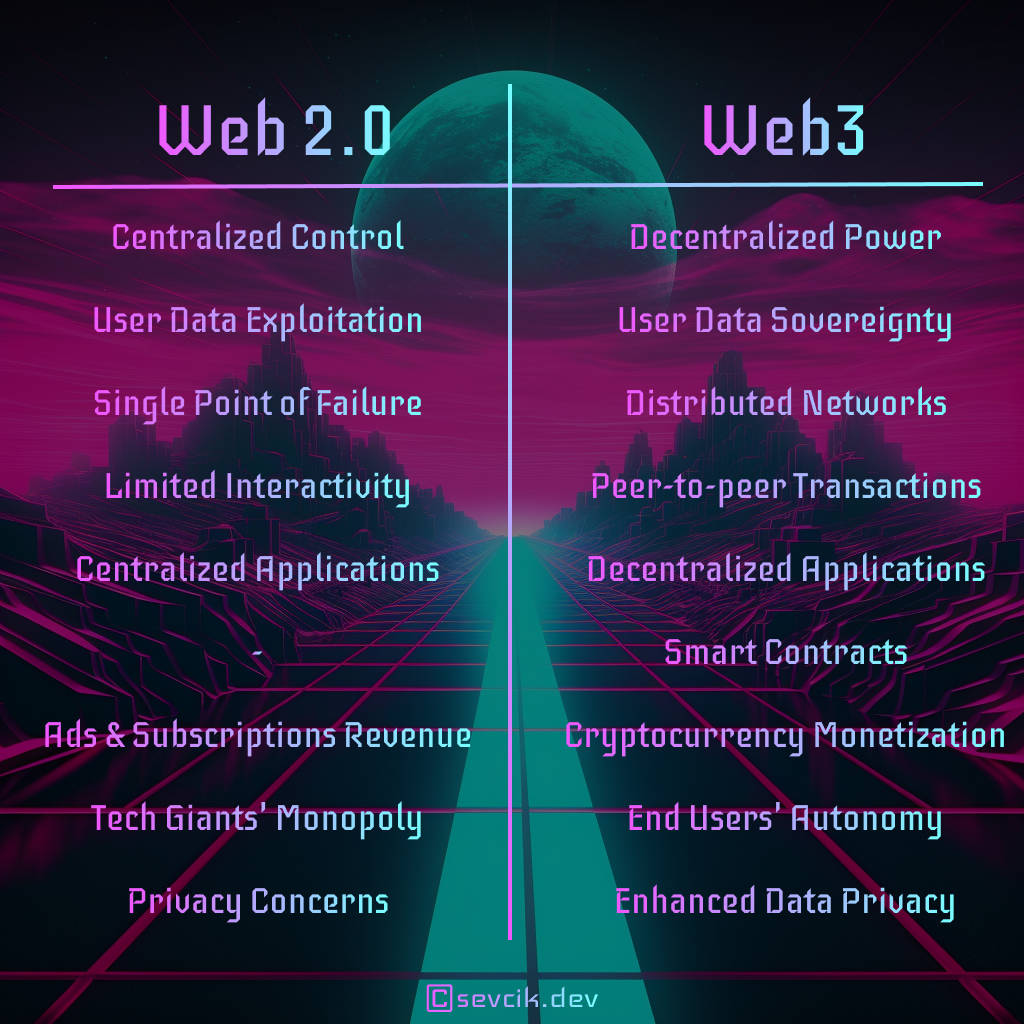
Section 2: Pillars of Web3 Development
Web3 development isn't just a single field of study; rather, it's a fusion of several technologies and concepts working in harmony to create a new generation of internet applications. These fundamental elements, or pillars, are critical to the development and functionality of Web3. Let's explore them one by one.
2.1 Understanding Blockchain in Web3
At the heart of Web3 is blockchain technology. Blockchains are decentralized and distributed digital ledgers that record transactions across multiple computers so that any involved record cannot be altered retroactively, without the alteration of all subsequent blocks. This attribute provides an unprecedented level of data security and transparency.
Moreover, blockchains enable decentralization by design. Unlike traditional databases controlled by single entities, blockchains are maintained by a network of peers, each holding a copy of the entire ledger. This structure ensures that no single authority can monopolize or manipulate the data.
2.2 Role of Smart Contracts
Smart contracts are the bridge that connects blockchain technology to practical, real-world applications. A smart contract is a self-executing contract with the terms of the agreement being written into code. They automatically execute transactions without needing a middleman, once pre-set conditions are met.
In Web3 development, smart contracts are vital for creating dApps. They govern the business logic of these applications and can represent and manage on-chain assets, making them crucial to sectors like decentralized finance (DeFi) and non-fungible tokens (NFTs).
2.3 What are Decentralized Applications (dApps)?
Decentralized applications, or dApps, are the tangible products of Web3 development. Unlike traditional applications, dApps run on a peer-to-peer network (like a blockchain) rather than a centralized server. This setup makes them more resilient, transparent, and open than their Web2 counterparts.
dApps leverage smart contracts to facilitate transactions and define functionalities. They're at the forefront of the decentralized internet, providing services ranging from decentralized exchanges (DEXs) and lending platforms in DeFi to digital art marketplaces in the NFT space.
2.4 Significance of Cryptocurrencies
Cryptocurrencies are integral to the functioning of the Web3 ecosystem. They not only serve as a means of exchange but also often play a role in governance and utility within the dApps ecosystem.
For example, Ethereum's native cryptocurrency, Ether (ETH), is used to pay for transaction fees on the network (known as "gas") and is required to interact with many dApps on the Ethereum blockchain. Other platforms like Solana, Cardano, or Near have their native tokens serving similar purposes.
Additionally, many dApps have their tokens, which can serve a variety of functions within their ecosystems. They may provide holders with voting rights, function as a utility token within the dApp, or reward users for certain behaviors, among other uses.
In conclusion, these four pillars - blockchain, smart contracts, dApps, and cryptocurrencies - form the bedrock of Web3 development. They interweave to create a new internet paradigm, enabling a level of user interaction, transparency, and decentralization that simply wasn't possible in the Web2 era.
Now that we've explored the fundamental concepts underlying Web3 development, let's look at the actual process, the tools, languages, and platforms that are essential for any aspiring Web3 developer.
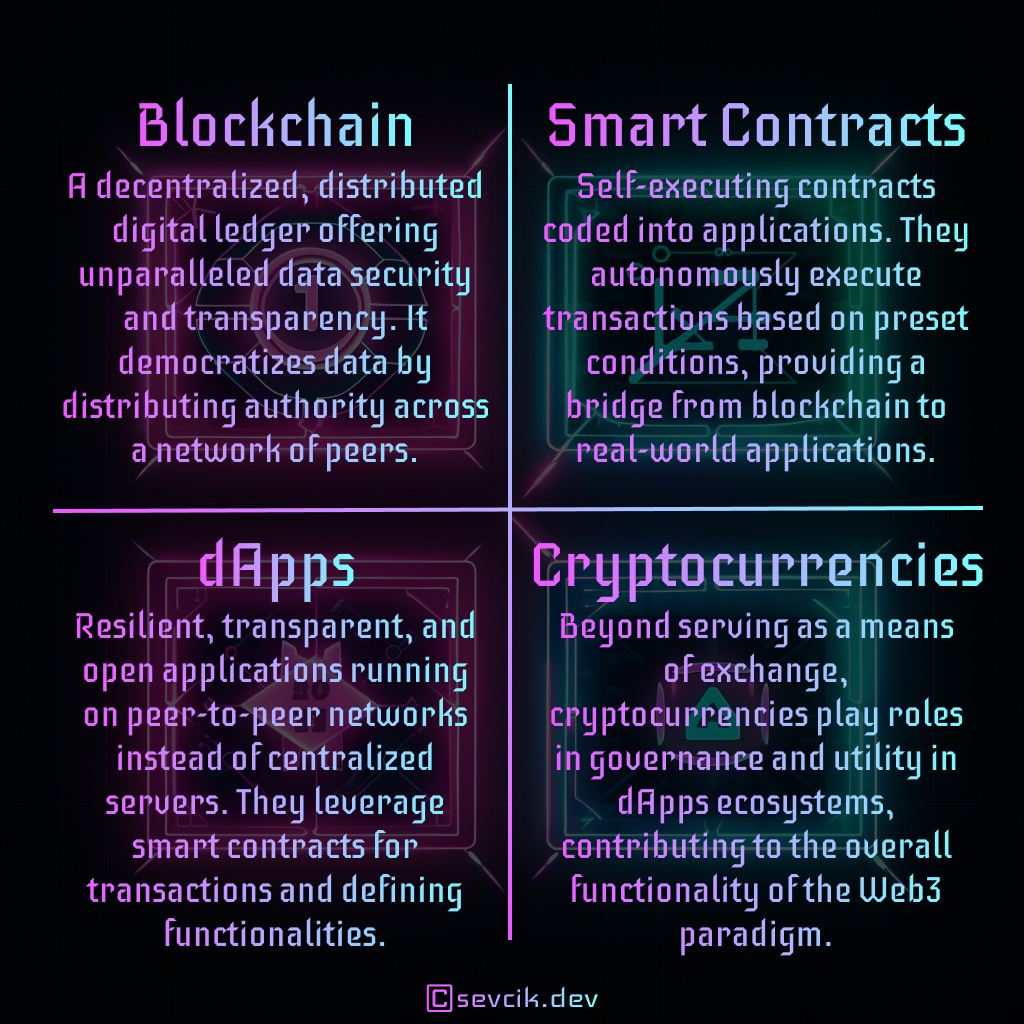
Section 3: Understanding Web3 Development
In the world of Web3, developers aren't just code crafters; they're pioneers shaping the future of the internet. Web3 development encompasses a wide array of skills and techniques, from understanding the core principles of blockchain to writing smart contracts and creating dApps. Let's explore this in more detail.
3.1 Key Skills for Web3 Development
Web3 development, while a unique field, borrows heavily from several established areas of software development. Here are a few critical skills to master:
- Solidity Programming: Solidity is the primary language for writing smart contracts on Ethereum, the most widely used blockchain for dApps. It's essential for creating and managing on-chain assets and logic. When you understand Solidity, you can also easily learn other smart contract languages used on other blockchains, such as Rust for Solana or Move for Aptos.
- Understanding of Blockchain Principles: A deep understanding of how blockchain technology works is crucial. This includes knowledge of consensus algorithms, cryptographic principles, decentralization, and more.
- JavaScript & Web Development Basics: Many tools for interacting with blockchains and dApps (like Web3.js or Ether.js) use JavaScript. Familiarity with this language, along with HTML and CSS, is very beneficial if you're looking to build user interfaces for dApps.
- Knowledge of IPFS: The InterPlanetary File System (IPFS) is a protocol and network designed to create a content-addressable, peer-to-peer method of storing and sharing data in a distributed file system. IPFS is used to store and retrieve files in Web3 applications.
- Understanding of Cryptoeconomics: This involves understanding how token economies work, as tokens (cryptocurrencies) play a crucial role in incentivizing behavior, governing platforms, and serving as a medium of exchange within dApps.
3.2 Key Tools and Platforms for Web3 Development
Several tools and platforms can aid in the process of Web3 development. Here are a few that every Web3 developer should be familiar with:
- Ethereum: As the leading platform for smart contracts, Ethereum is a vital tool in any Web3 developer's toolkit. It hosts the majority of dApps and serves as the blueprint for many other smart contract platforms.
- Web3.js/Ethers.js: These JavaScript libraries allow developers to interact with a local or remote Ethereum node using HTTP, IPC, or WebSocket. They're crucial for building user interfaces for dApps.
- Metamask: Metamask is a browser extension that allows anyone to run Ethereum dApps right in their browser without running a full Ethereum node. As a developer, understanding how users will interact with your dApp via wallets like Metamask is critical.
- Truffle Suite: Truffle is a development environment, testing framework, and asset pipeline for Ethereum, aiming to make life as an Ethereum developer easier.
- Hardhat: This is a development environment for compiling, deploying, testing, and debugging Ethereum software. It's known for its robust debugging and testing capabilities.
- IPFS: As mentioned earlier, IPFS is used for decentralized storage, making it a critical tool for building dApps.
3.3 Web3 Development Process
The process of developing a Web3 application isn't vastly different from developing a regular application, but there are some additional steps and considerations due to the decentralized nature of Web3.
- Designing the dApp: This includes both the user interface (UI) design and the design of the smart contracts that will handle the application's logic.
- Writing the Smart Contracts: Smart contracts are typically written in Solidity (for Ethereum and some other blockchains), and these form the backbone of your dApp.
- Testing the Smart Contracts: It's crucial to test your smart contracts thoroughly before deploying them. Because of the immutable nature of blockchains, a bug in a smart contract can be catastrophic.
- Deploying the Smart Contracts: Once your smart contracts have been written and tested, they're deployed to the blockchain.
- Developing the Front End: Like any other app, a dApp has a front end that users interact with. This is usually built using standard web technologies like HTML, CSS, and JavaScript.
- Connecting the Front End to the Blockchain: This is where libraries like Web3.js or Ethers.js come in, enabling your application's front end to interact with the blockchain.
3.4 Challenges in Web3 Development
Despite its exciting possibilities, Web3 development isn't without its challenges. The immutability of smart contracts means errors can have serious consequences, and the relative novelty of the field means best practices are still being established. Furthermore, Web3 applications must deal with issues like transaction costs (gas fees on Ethereum, for example), scalability, and latency - issues not typically encountered in traditional app development.
In conclusion, Web3 development is a dynamic and fast-growing field, with a steep learning curve but the potential for immense reward. It offers developers the opportunity to work at the cutting edge of technology, shaping the future of the internet, and creating applications that could change how we interact with the digital world.
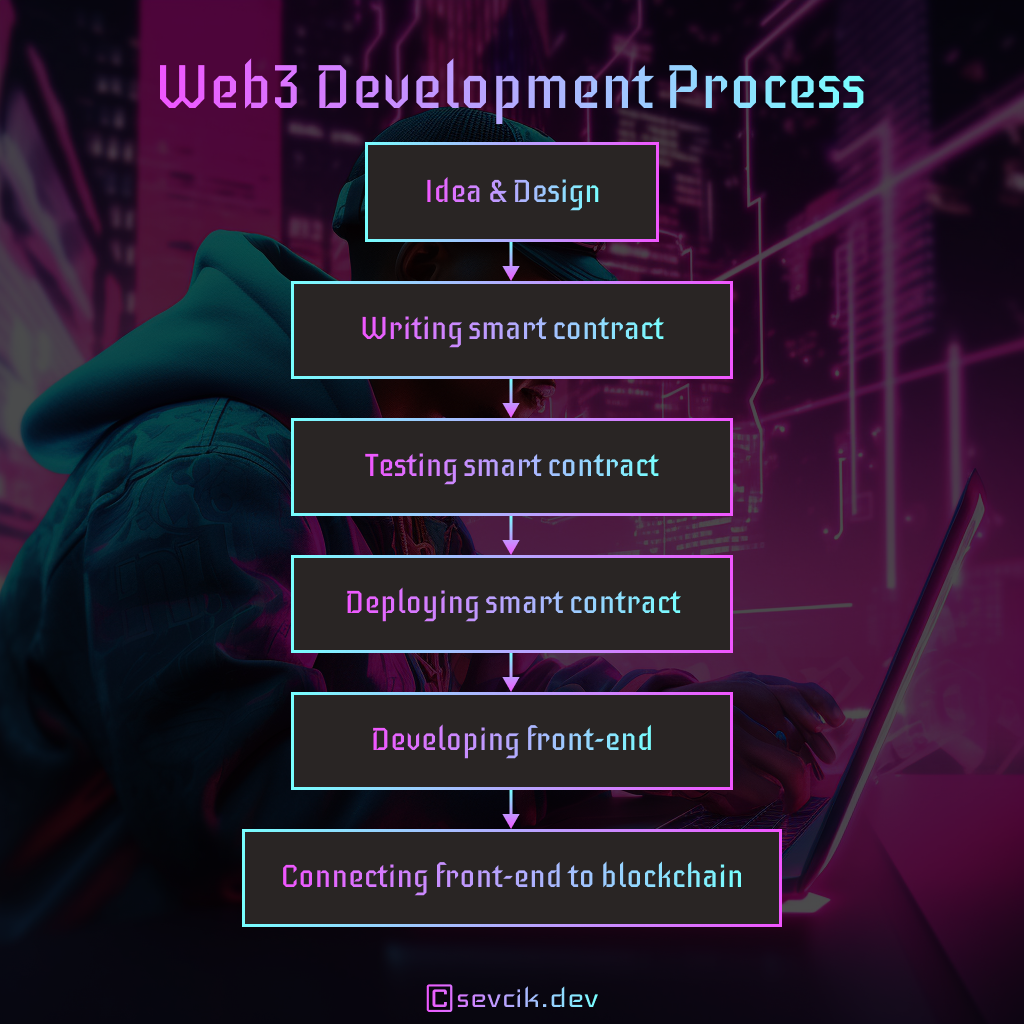
Section 4: The Role of Web3 in DeFi and NFTs
The rise of Web3 has not only influenced the way we interact with the internet but also revolutionized particular sectors like finance and the arts. Let's look at how Web3 development is shaping two of the most influential spaces in the crypto industry: Decentralized Finance (DeFi) and Non-Fungible Tokens (NFTs).
4.1 Web3 and Decentralized Finance (DeFi)
Decentralized Finance, or DeFi, is a transformative field that uses blockchain technology to recreate and improve upon traditional financial systems and services. DeFi applications, built on the principles of Web3, aim to democratize finance by eliminating intermediaries and promoting open access.
At the heart of DeFi are smart contracts, which automate the execution of financial transactions, from issuing loans to trading assets. These programmable contracts eliminate the need for traditional financial intermediaries like banks or brokers, resulting in a system that is more transparent, efficient, and inclusive.
In the DeFi space, Web3 development has enabled the creation of various financial products and services:
- Decentralized Exchanges (DEXs): Unlike traditional exchanges, DEXs allow users to trade directly with one another, without the need for an intermediary. This peer-to-peer exchange is made possible through the use of smart contracts.
- Lending and Borrowing Platforms: Web3 has enabled the development of platforms that allow users to lend and borrow funds directly, without the need for a bank. These platforms use smart contracts to automatically manage loan terms, interest payments, and collateral.
- Yield Farming: This is another financial innovation brought about by DeFi. Yield farming involves lending out cryptocurrencies in return for interest and fees. The automation of this process is made possible through Web3 development.
4.2 Web3 and Non-Fungible Tokens (NFTs)
In the world of art and collectibles, Web3 has brought a significant shift through Non-Fungible Tokens (NFTs). NFTs use the blockchain's ability to prove ownership and authenticity, bringing the concept of uniqueness and scarcity to the digital world.
Each NFT is distinct and cannot be replaced with something else, making them perfect for digitizing ownership or proof of authenticity. This unique feature has opened up new possibilities in art, gaming, real estate, and many other sectors.
For instance, digital artists can mint their art as NFTs and sell them directly to collectors without the need for a gallery or auction house. In addition, game developers can create in-game items as NFTs, which players truly own and can trade or sell independently.
In both DeFi and the NFT space, Web3 development plays a crucial role. By creating decentralized, transparent, and accessible platforms and markets, Web3 is driving innovation and inclusivity in these sectors.
In the next section, we'll explore how Web3 development is influencing the future of the internet and what that could mean for developers and users alike.
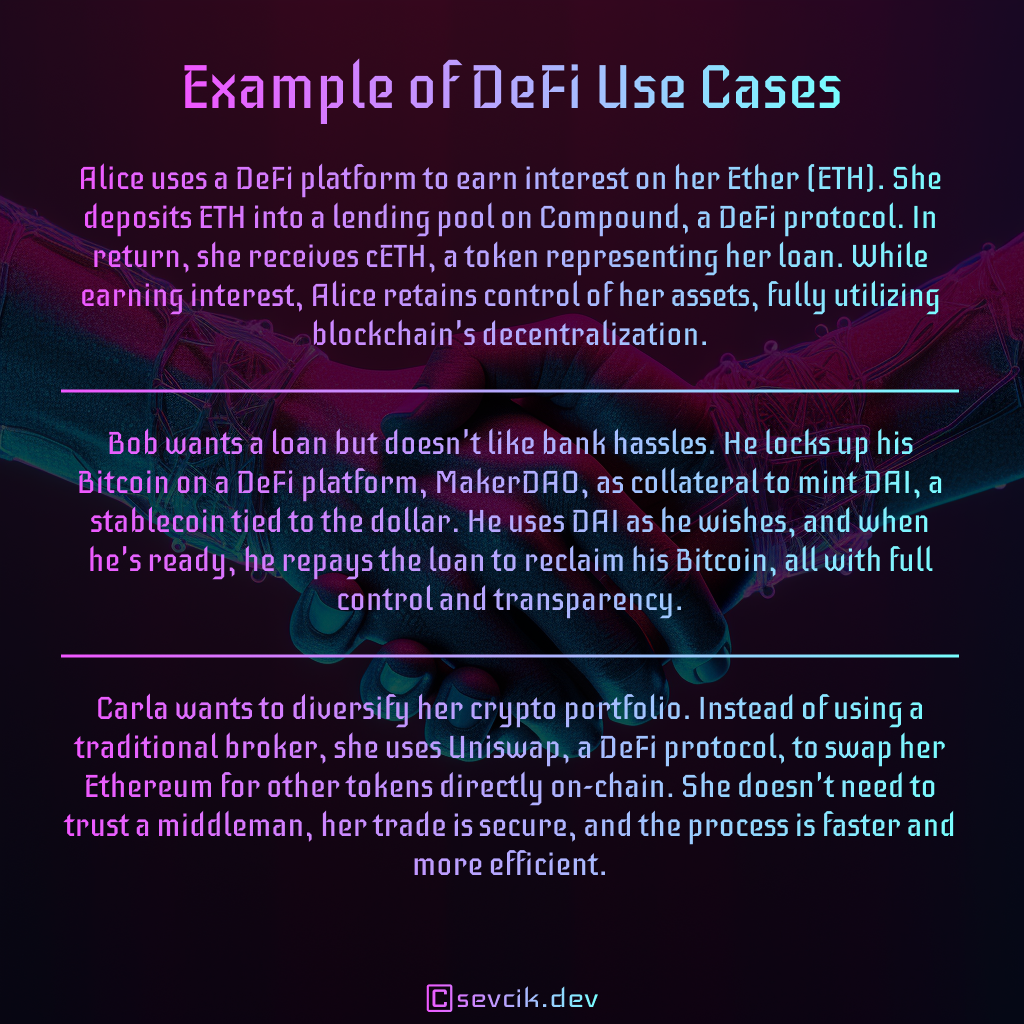
Section 5: Future of Web3 Development
As we delve deeper into the 21st century, Web3 development is poised to become a dominant force that shapes the future of the internet. It holds the promise of a more transparent, resilient, and democratic digital space that reimagines the power dynamics of the Web as we know it. Let's explore what lies ahead.
5.1 Growth Prospects of Web3 Development
The trajectory of Web3 development is undeniably upward. According to a report from the Blockchain Council, the global blockchain market size will reach $39.7 billion by 2025, growing at a compound annual growth rate (CAGR) of 67.3% during 2020-2025. These figures suggest an increasing demand for Web3 developers in the coming years.
The driving force behind this growth lies in the increasing adoption of blockchain technology across industries. As more sectors recognize the benefits of decentralization, from healthcare to supply chain management, the demand for skilled Web3 developers will likely continue to grow.
Furthermore, as we see more advancements in the fields of DeFi, NFTs, and decentralized autonomous organizations (DAOs), the need for Web3 developers with specialized knowledge in these areas will become more pronounced.
5.2 How Web3 Can Reshape the Internet
Web3 has the potential to fundamentally reshape our relationship with the internet. Here's how:
- Decentralization: Web3 could decentralize the internet, moving away from the concentration of power in the hands of a few big tech companies. This can lead to improved data privacy, reduced censorship, and increased access and ownership for users.
- Trustless Transactions: The transparency and security of blockchain can eliminate the need for intermediaries, enabling peer-to-peer transactions that are trustless and efficient.
- Digital Ownership: With blockchain's ability to verify authenticity and ownership, Web3 could lead to a revolution in how we perceive digital assets. The rise of NFTs, for instance, is already changing how we value digital art and collectibles.
- User Empowerment: By giving users control over their data and digital assets, Web3 could lead to a shift in online power dynamics, creating an internet that benefits the many, not just the few.
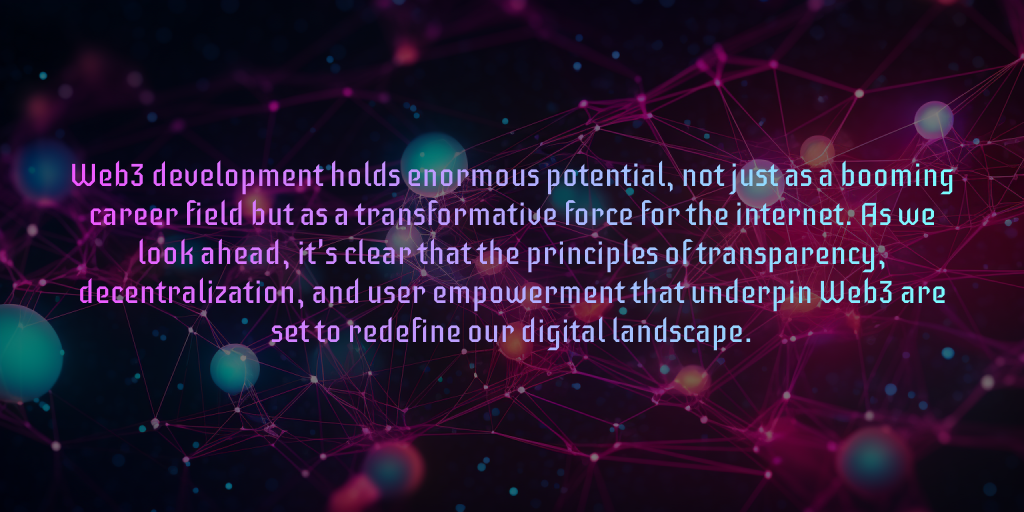
Conclusion
In essence, Web3 development marks the dawn of a new era on the internet. It's a transformational shift from centrally controlled systems to a decentralized, transparent, and user-centric web. Understanding Web3 isn't just about learning a new set of development skills; it's about participating in the reshaping of digital interactions, economic models, and power structures online.
From understanding the distinction between Web2 and Web3, to grasping the core pillars of Web3 development, we've covered significant ground. We've seen how Web3 is the driving force behind revolutionary concepts like DeFi and NFTs, and peeked into the promising future of this technology.
The world is steadily marching towards a more decentralized future. As developers, you stand on the threshold of a digital revolution. Whether it's creating the next disruptive dApp, minting digital art as NFTs, or building decentralized financial platforms, the possibilities are boundless. Now is the time to dive in, learn, experiment, and be a part of this exciting journey.